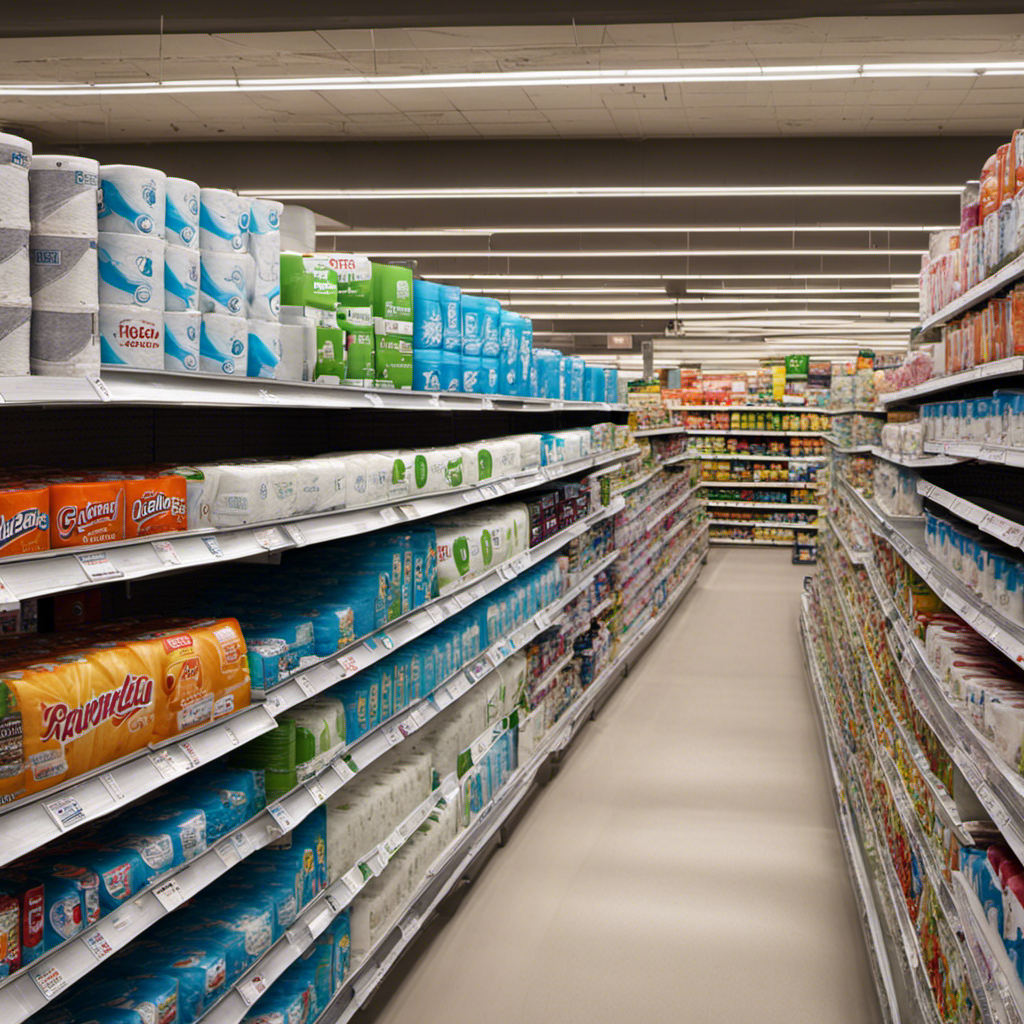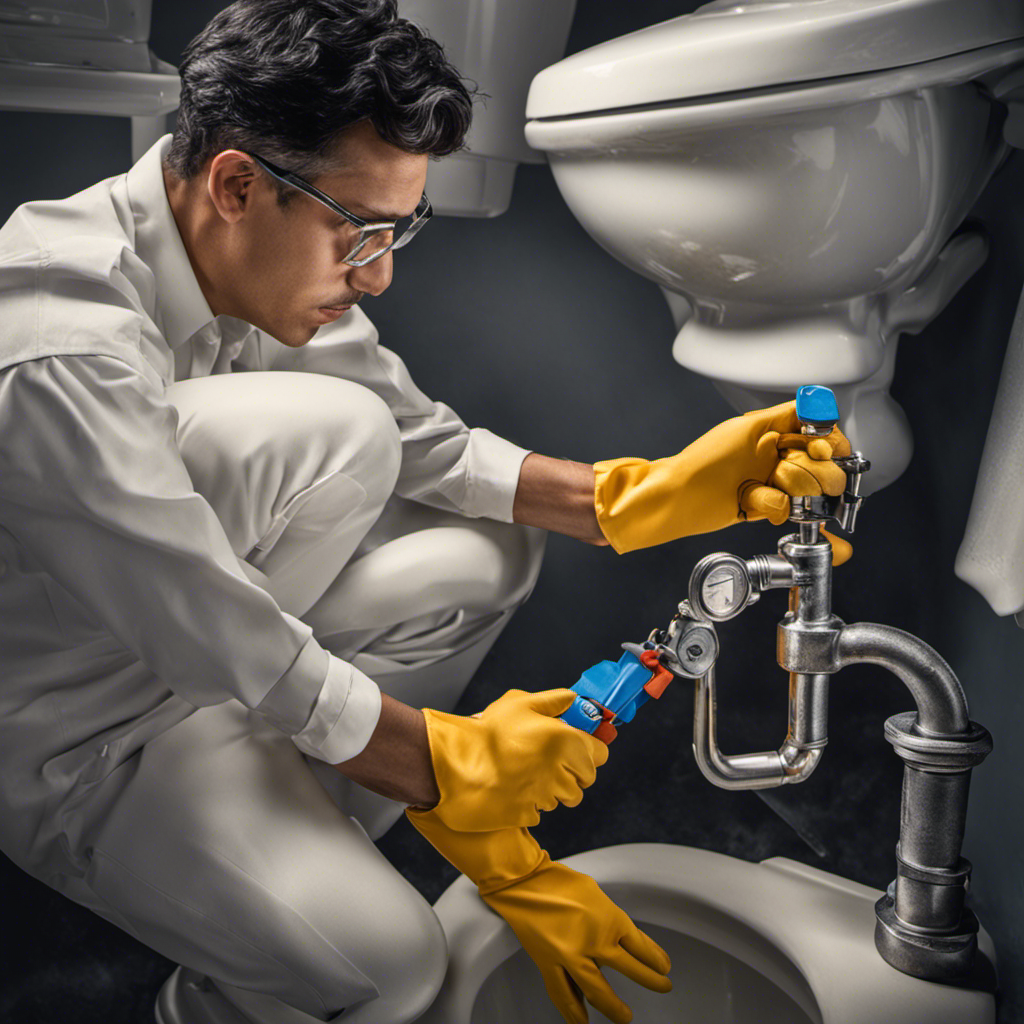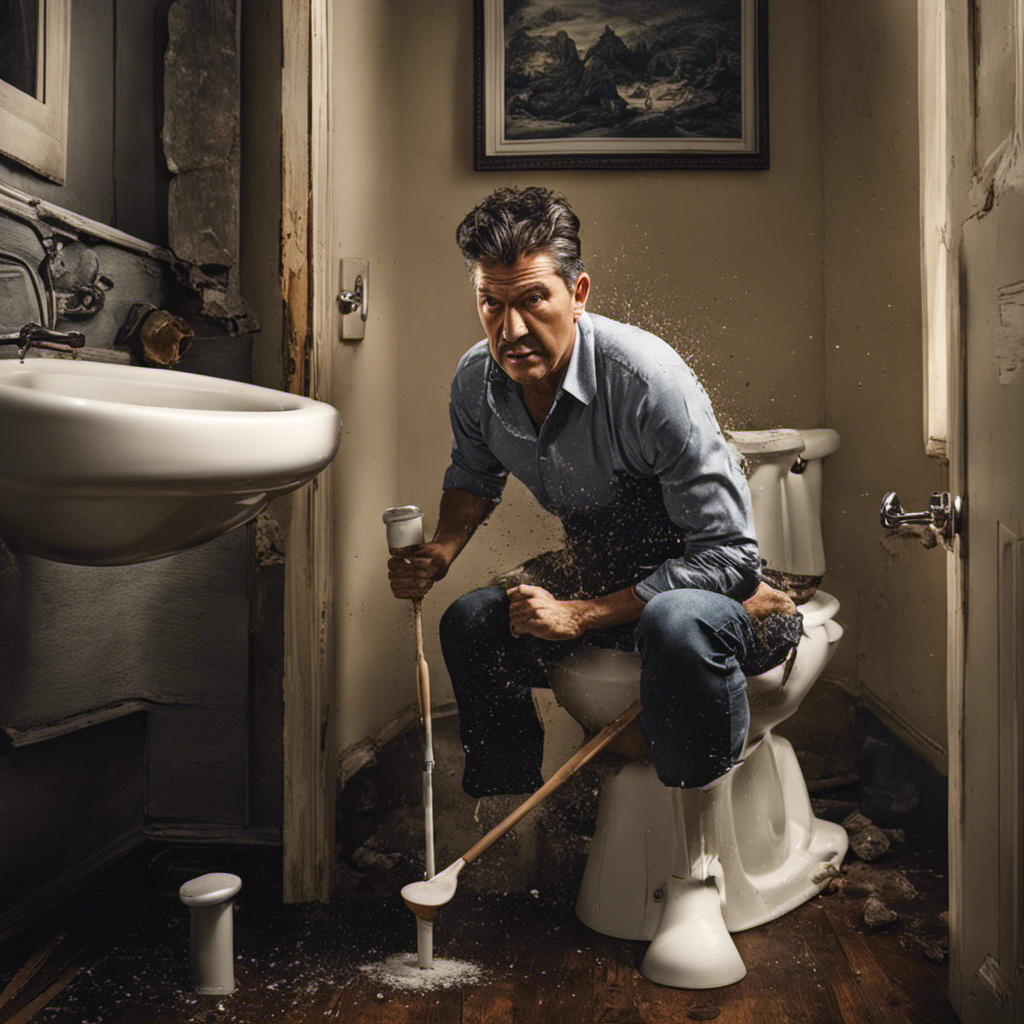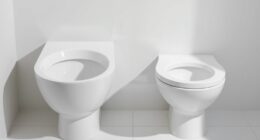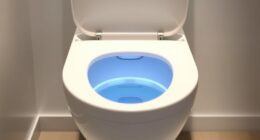As I watch my furry companion gleefully tear into yet another roll of toilet paper, I can’t help but wonder: why does my dog eat toilet paper? This seemingly bizarre behavior has left me perplexed, prompting me to delve into the depths of canine psychology to uncover the reasons behind this peculiar habit.
In this article, we will explore the possible explanations for this behavior, highlight the potential risks it poses, and provide practical tips to prevent and manage this toilet paper obsession.
Key Takeaways
- Dogs have a natural inclination to explore their environment through chewing, which may explain their interest in toilet paper.
- Chewing on toilet paper provides a sensory experience for dogs and can be a form of exploration or attention-seeking behavior.
- Eating toilet paper can pose risks to dogs’ digestive systems, including stomach upset, diarrhea, and intestinal blockages.
- Preventing dogs from accessing toilet paper through environmental modifications and providing alternative chewing outlets can help address this behavior.
Possible Reasons for Your Dog’s Toilet Paper Eating Habit
There are several possible reasons why your dog might be eating toilet paper. Understanding canine preferences can help shed light on this behavior.
Dogs have a natural inclination to explore their environment through chewing, and toilet paper may be appealing due to its texture and scent. Additionally, dogs might find toilet paper satisfying to chew on because it provides a sensory experience.
However, it’s important to address this behavior as it can lead to health issues such as intestinal blockage. Training alternatives for chewing can be effective in redirecting your dog’s attention.
Providing appropriate chew toys, engaging in interactive play, and reinforcing good behavior with treats can help satisfy your dog’s chewing needs. Consistency and positive reinforcement are key when implementing training alternatives to discourage the consumption of toilet paper.
Understanding Canine Behavior and Toilet Paper Consumption
To understand why your furry friend devours toilet paper, it’s helpful to explore their behavior and what might be driving this peculiar habit.
Canine psychology plays a significant role in understanding why dogs engage in certain behaviors. One possible explanation for eating toilet paper is that it provides a sensory experience for dogs. The texture and taste can be appealing to them.
Additionally, dogs may engage in this behavior as a form of exploration or attention-seeking. Behavioral training can be an effective way to address this issue. By providing alternative outlets for their chewing needs and reinforcing positive behaviors, you can help redirect their attention away from toilet paper.
However, it’s important to be aware of the potential risks and dangers of dogs eating toilet paper.
The Potential Risks and Dangers of Dogs Eating Toilet Paper
Chewing on toilet paper can pose several risks and dangers for dogs. Dogs have sensitive digestive systems that are not designed to break down and digest non-food items like toilet paper. When ingested, toilet paper can cause stomach upset, diarrhea, and even more serious complications such as intestinal blockages. The chemicals used in the production of toilet paper can also be harmful to dogs if consumed in large quantities.
To prevent these risks, it is important to keep toilet paper out of your dog’s reach and provide them with appropriate chew toys and bones to satisfy their chewing needs. There are also toilet paper alternatives available, such as biodegradable wipes or reusable cloth wipes, which are safer options for both your dog and the environment.
How to Prevent and Discourage Your Dog From Eating Toilet Paper
When it comes to dogs eating toilet paper, there are several safety hazards that pet owners should be aware of. Ingesting toilet paper can lead to digestive issues, such as blockages or obstructions, which may require surgical intervention.
To prevent this behavior, training alternatives for chewing can be implemented, such as providing appropriate chew toys or engaging in interactive play sessions. Additionally, environmental modifications, such as keeping the bathroom door closed or using baby gates to restrict access, can help prevent dogs from having access to toilet paper.
Safety Hazards of Ingestion
The ingestion of toilet paper can pose safety hazards for your dog. While it may seem harmless, eating toilet paper can lead to various health risks for our furry friends. Here are a few reasons why it’s important to prevent your dog from consuming toilet paper:
-
Choking hazard: Swallowing large amounts of toilet paper can cause blockages in the digestive system, leading to choking or even life-threatening obstructions.
-
Intestinal blockage: The fibers in toilet paper can clump together in your dog’s stomach or intestines, causing blockages that may require surgery to remove.
-
Toxic substances: Some toilet papers are treated with chemicals or dyes that can be toxic if ingested by dogs.
-
Digestive upset: Consuming toilet paper can upset your dog’s stomach, leading to vomiting, diarrhea, and discomfort.
To avoid these risks, consider using toilet paper alternatives such as biodegradable wipes, or keep your dog in a separate area to prevent access to toilet paper. Always consult a veterinarian if your dog has ingested toilet paper or is showing any signs of distress.
Training Alternatives for Chewing
Using training toys and interactive puzzles can provide mental stimulation and help redirect your pup’s attention away from destructive behaviors. By engaging your dog in positive training techniques, you can teach them alternative behaviors to chewing on toilet paper. Positive reinforcement, such as rewarding your dog with treats or praise when they engage with their training toys, can be effective in redirecting their focus. Additionally, providing a variety of toys and puzzles that challenge your dog’s problem-solving skills can keep them mentally stimulated and less likely to turn to destructive chewing. Here is a table showcasing different training techniques and their benefits:
| Training Technique | Benefits |
|---|---|
| Treat Dispensing Toys | Keeps dogs mentally stimulated |
| Puzzle Toys | Engages problem-solving skills |
| Food-Scatter Games | Provides mental and physical exercise |
Incorporating these training techniques into your pup’s routine can help curb their chewing habits and provide them with healthier outlets for their energy and curiosity.
Environmental Modifications for Prevention
Incorporating environmental modifications such as baby gates and closing doors can help prevent your pup from accessing areas where they are more likely to chew. By creating physical barriers, you can effectively limit their access to items like toilet paper.
Here are some additional training techniques that can complement these modifications:
- Provide appropriate chew toys: Giving your dog plenty of chew toys can redirect their chewing behavior towards acceptable items.
- Use positive reinforcement: Rewarding your dog with treats or praise when they chew on their toys instead of inappropriate objects can help reinforce good behavior.
- Supervise your dog: Keeping a close eye on your pup can help prevent them from chewing on forbidden items.
- Seek professional help: If your dog’s chewing behavior persists or worsens, consider consulting a professional trainer or behaviorist for further guidance.
Tips for Managing and Redirecting Your Dog’s Toilet Paper Obsession
If your dog can’t resist snacking on toilet paper, try redirecting their attention with chew toys instead. Redirecting behavior is a powerful tool in dog training, and positive reinforcement can help encourage your dog to engage in more appropriate activities. By providing your dog with chew toys, you are offering them an alternative outlet for their chewing instincts. This not only helps redirect their attention away from toilet paper, but it also helps satisfy their natural need to chew. Chew toys come in various shapes, sizes, and textures, so you can find one that suits your dog’s preferences. Here is a table highlighting some popular chew toys that can help redirect your dog’s behavior:
| Toy Name | Material | Features |
|---|---|---|
| Kong Classic | Natural rubber | Stuffable with treats |
| Nylabone | Durable nylon | Helps clean teeth |
| Benebone | Real bacon flavor | Ergonomic design |
| Busy Buddy | Rubber and nylon | Treat-dispensing |
Remember to supervise your dog when giving them chew toys and always provide positive reinforcement when they engage with the toys instead of the toilet paper.
Seeking Professional Help: When to Consult a Veterinarian or Dog Behaviorist
When it comes to our dogs, it’s important to be aware of any signs of aggression, unusual eating habits, or persistent anxiety or fear. These behaviors can indicate underlying issues that may require professional help from a veterinarian or dog behaviorist.
Recognizing and addressing these problems early on can help ensure the well-being and happiness of our furry friends.
Signs of Aggression
You should pay attention to signs of aggression in your dog if they have a habit of eating toilet paper. Aggression can be triggered by various factors, and it’s important to identify and address them to ensure the safety of your dog and others. Here are some signs to look out for:
- Growling or snarling
- Baring teeth or snapping
- Lunging or biting
- Prolonged staring or intense eye contact
If you notice any of these signs, it’s crucial to seek professional help and implement behavioral modification techniques. Consult a veterinarian or dog behaviorist who can assess your dog’s behavior and provide appropriate guidance. They may recommend positive reinforcement training, socialization exercises, or other behavior modification methods to address the underlying causes of aggression.
Unusual Eating Habits
To address unusual eating habits in your dog, it’s important to understand the underlying reasons and consult a professional for guidance.
Unusual eating behaviors can range from ingesting non-food items like toilet paper to excessive food consumption or refusing to eat altogether. These behaviors can have serious health implications for your furry friend.
Eating non-food items, known as pica, can lead to intestinal blockages or toxic reactions if the item consumed is harmful. Excessive food consumption can result in obesity and its associated health problems, such as diabetes and joint issues.
On the other hand, refusing to eat can be a sign of an underlying medical condition or behavioral issue. It’s crucial to seek veterinary advice to determine the cause of these unusual eating behaviors and formulate an appropriate management plan to ensure the health and well-being of your beloved pet.
Persistent Anxiety or Fear
If your dog is experiencing persistent anxiety or fear, it’s important to address the issue promptly to ensure their well-being. Dogs can exhibit various signs of anxiety or fear, such as trembling, excessive barking, destructive behavior, or withdrawal.
Understanding the underlying causes and implementing appropriate interventions can help alleviate their distress.
Here are some strategies to consider:
- Provide a safe and comfortable environment for your dog, with a designated quiet space or crate where they can retreat to when feeling anxious.
- Gradually expose your dog to the triggers that cause their anxiety, using positive reinforcement techniques to help them associate those triggers with positive experiences.
- Incorporate regular exercise and mental stimulation into your dog’s routine, as physical activity can help reduce anxiety levels.
- Consult with a veterinarian or professional dog behaviorist who can provide guidance and potentially recommend medication or specialized training programs to address your dog’s persistent anxiety or fear response.
Conclusion
In conclusion, it is important to understand why dogs eat toilet paper. This understanding allows us to address the behavior and prevent any potential risks or dangers. There can be various reasons for this habit, such as boredom, anxiety, or a nutritional deficiency. To address this behavior, it is crucial to redirect your dog’s attention and provide them with appropriate chew toys or mental stimulation. Interestingly, a study conducted by the American Kennel Club found that around 19% of dogs have been observed eating toilet paper at some point in their lives. By implementing preventive measures and seeking professional help when needed, you can ensure your dog’s well-being and discourage this behavior.

